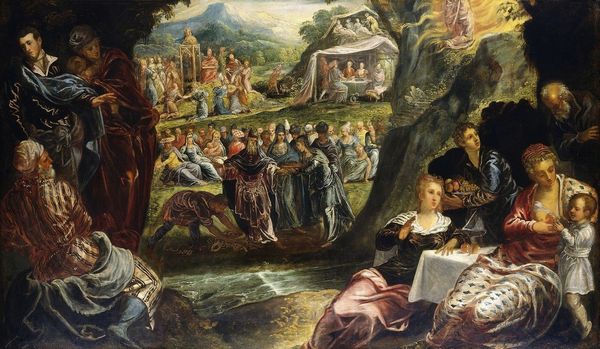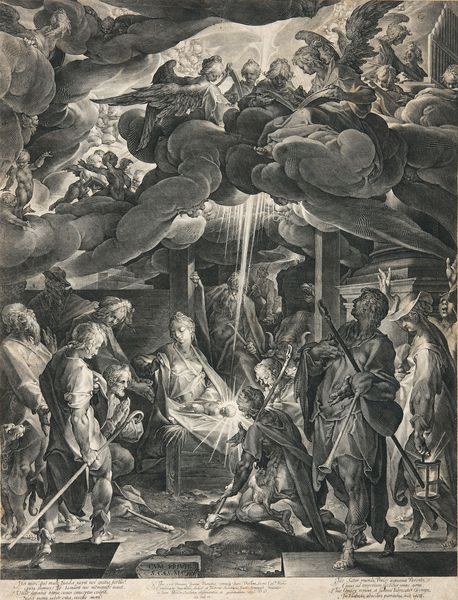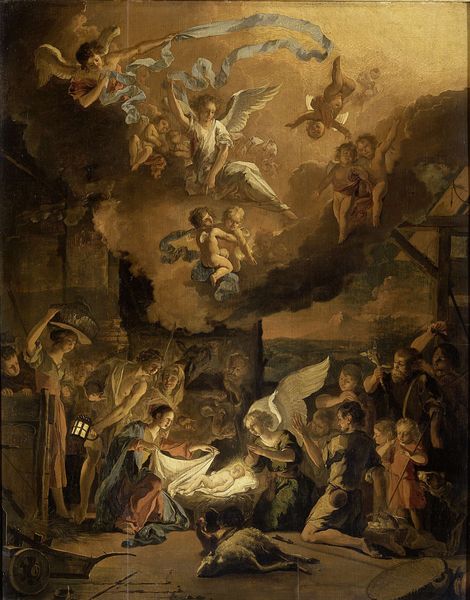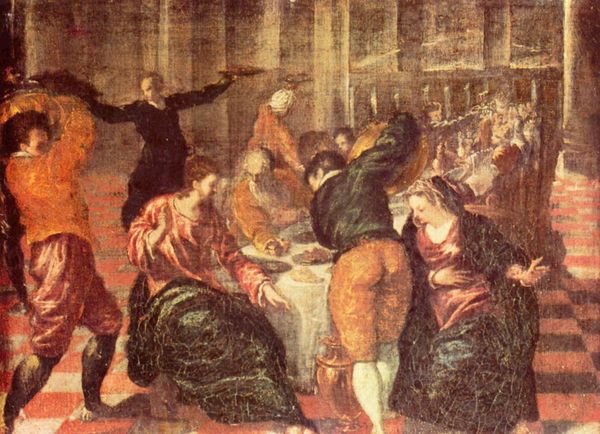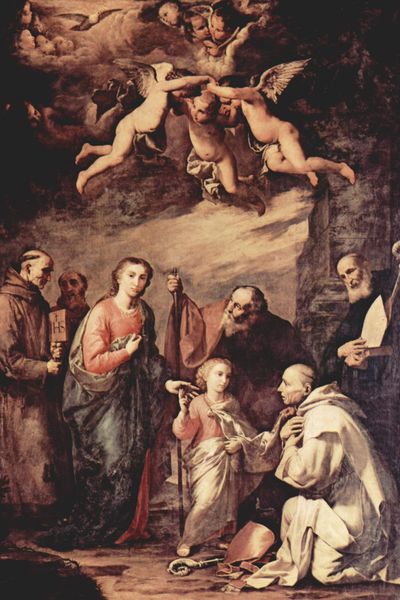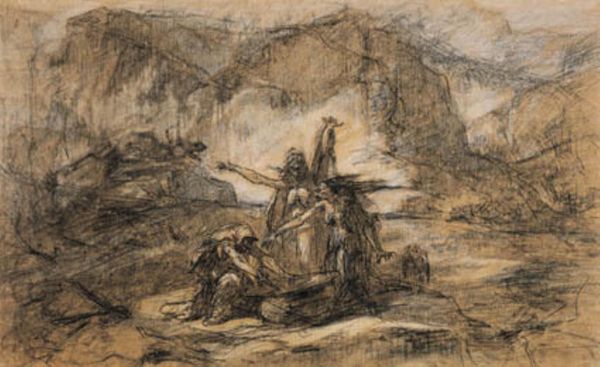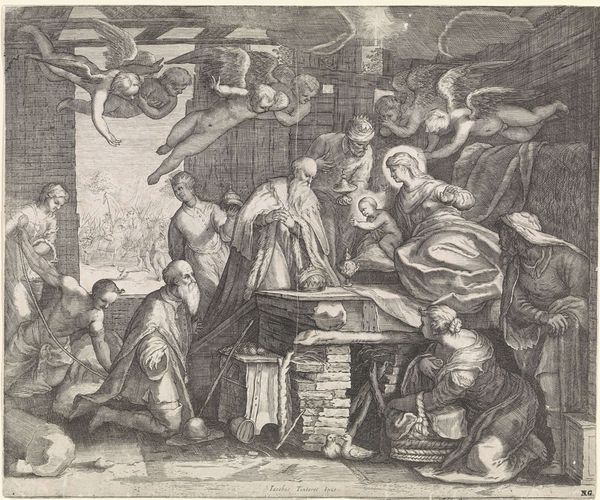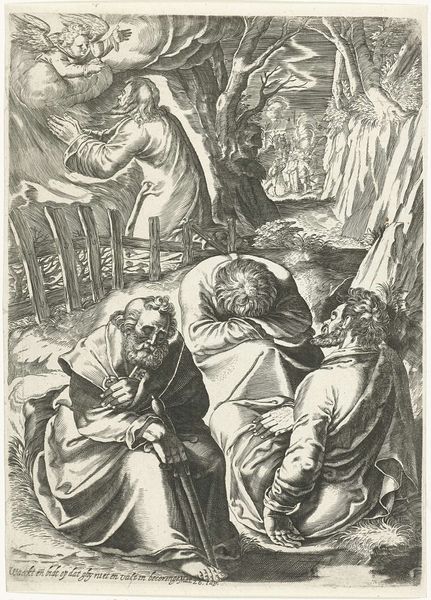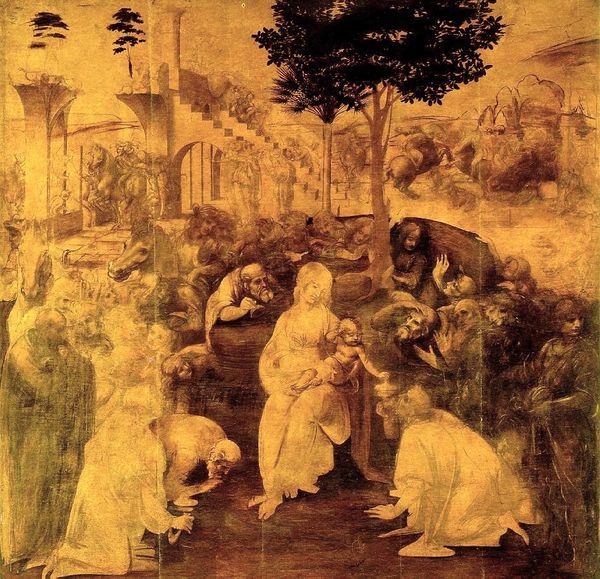
Copyright: Public domain
John Ruskin’s study captures Tintoretto’s "Adoration of the Magi," a scene brimming with symbolic weight. Dominating the composition is the presentation of gifts to the Christ Child, a profound motif of reverence and acknowledgement of divine authority, deeply rooted in Christian iconography. The act of offering gifts is not confined to this singular moment; recall the votive offerings in ancient Greek temples, or the tribute paid to emperors—gestures signifying respect, submission, and the cyclical exchange between mortals and the divine. Even in secular contexts, gifting embodies underlying power dynamics and emotional expressions. Reflect on how this symbol has journeyed through time, morphing from religious sacrament to social convention. The psychological impact remains potent: both giver and receiver are bound by the act, laden with expectations, gratitude, and even subconscious projections. In Tintoretto’s rendering, imbued with intense emotion, this timeless exchange invites viewers to contemplate their own place within this intricate web of history and belief. The symbol resurfaces, evolved, with new layers of meaning in each context.
Comments
No comments
Be the first to comment and join the conversation on the ultimate creative platform.

